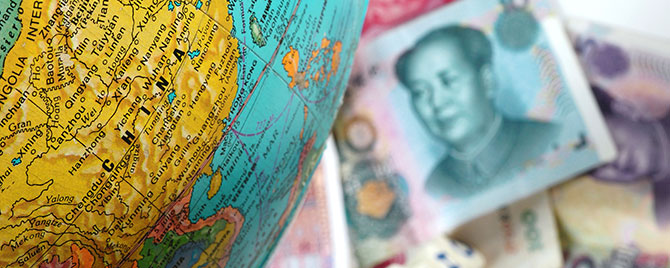SF Fed Blog
-
Stemming the Tide of Displacement: The Highlight Reel
An unsolved challenge–particularly in fast growing places like the Bay Area–is ensuring that economic growth, investment in new transit and infrastructure, and changing residential preferences do not lead to displacement of low-income households. Can data and research help shed light on pathways to more equitable and sustainable metropolitan areas? Bay Area researchers and practitioners believe so.
-

Asia is the New Engine of Growth in the Shadow Banking System
Monitoring and controlling risks in the shadow banking system is one of the most important tasks facing financial regulators around the world. Asia has recently emerged as the largest source of growth for the global shadow banking system.
-
Not All NPLs Are Created Equal
Credit quality is a key aspect of an institution’s overall soundness. Arguably the most widely used measure for gauging the quality of an institution’s loan portfolio is the reported nonperforming loan (NPL) ratio. However, not all countries use the same definition and therefore NPL ratios are not necessarily comparable across borders.
-
CDFIs as Economic Shock Absorbers
The Great Recession sent shock waves through the world economy. Few lenders emerged unscathed, and the economic consequences for their investors and borrowers were often catastrophic. Community development financial institution (CDFI) loan funds, however, acted as economic shock absorbers for low-income and minority communities hit especially hard during the downturn.
-
Consumer Complaints against Banks: A Look at the Numbers
Consumer input has long been an important part of the free market system. It allows businesses to change and adapt products and services based on what individuals want and need at the time. With this in mind, the federal bank regulators set up a consumer help center where individuals can file complaints against banks if they feel that they have been mistreated in any way. How does it work and what have we learned?
-

The ABCs of ASEAN’s Economic and Banking Integration
In 2007, the ten member countries of the Association of Southeast Asian Nations (ASEAN) adopted the goal to achieve economic integration by creating an ASEAN Economic Community (AEC) by year end 2015. The AEC aims to shift ASEAN from ten fragmented economies to a single market of goods, services, and investment together with freer movement […]
-

After the Fall: The Path Forward for China’s Stock Market and Economy
On October 20, 2015 at its Los Angeles branch, the Federal Reserve Bank of San Francisco hosted an Asia Financial Forum entitled After the Fall: The Path Forward for China’s Stock Market and Economy. The event featured Andy Rothman, who spent 20 years in China first as a diplomat and then as an investment strategist. […]
-

Banking on China through Currency Swap Agreements
As China establishes itself as the world’s second largest economy and top trading nation, its currency, the renminbi (RMB), is also gaining popularity around the world. According to the People’s Bank of China’s 2015 Renminbi Internationalization Report, the RMB was the world’s 5th most used payment currency, the 2nd most used trade finance currency, and […]
-

Capital Flows Go into Reverse in Asia’s Financial Hubs
While much of the world has seen a retrenchment in international lending following the financial crisis, Asian banks have dramatically increased their international exposure. Even more striking is that in Asia’s financial centers, Singapore and Hong Kong, the increase in international activity has been accompanied by a change in direction of capital flows. Both economies have now become large net lenders to emerging Asia, a change that reflects larger underlying trends in the region.
-

Capital Flows Go into Reverse in Asia’s Financial Hubs
While much of the world has seen a retrenchment in international lending following the financial crisis, Asian banks have dramatically increased their international exposure. Even more striking is that in Asia’s financial centers, Singapore and Hong Kong, the increase in international activity has been accompanied by a change in direction of capital flows. Both economies have now become large net lenders to emerging Asia, a change that reflects larger underlying trends in the region.